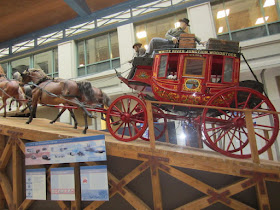 This is Orson Welles by Orson Welles and Peter Bogdanovich, edited by Jonathan Rosenbaum
This is Orson Welles by Orson Welles and Peter Bogdanovich, edited by Jonathan Rosenbaum
Film director Peter Bogdanovich conducted several interviews with Orson Welles from the late 1960s to the early 1980s. The plan was to publish the transcripts as an autobiography. The project sat on the back burner for them and the book was only published in 1992, seven years after Welles' death. Bogdanovich turned the project over to an editor to complete. The book includes an in-depth chronology of Welles' career in radio, theater, and film, along with an appendix summing up the cuts and changes to The Magnificent Ambersons, Welles's film just after Citizen Kane.
The interviews follow Welles' career mostly in chronological order with a focus on the movies on which he worked. Welles has plenty of fun stories about productions and heartbreaking tales of conflicts with studios. Welles made a big splash in radio with The Shadow and The War of the Worlds broadcast. He came to Hollywood with a lot of ambition and naivety. He had full artistic control over Citizen Kane, resulting in a challenging masterpiece that was divisive in Hollywood. He was working on a special project in South America while Ambersons was being re-edited by the studio. The bad blood over its handling sent Welles out of the studio system as a film maker. He had to scramble to find financing for his projects, often acting in other films or courting foreign investors to get the money he needed. The interviews end discussing Touch of Evil (1958), though they do chat about his work in the 1960s and 70s throughout the book.
Bogdanovich is clearly a good friend and admirer of Welles, so he never presses too hard on difficult subjects (though Welles does occasionally complain about returning to the same topics, like Citizen Kane). Welles lives up to his reputation for bon homie and a certain fullness of himself. He's a talented guy and he knows it. He loves the craft of filmmaking (and art in general) and holds to his own principles and opinions. He's an interesting fellow though not entirely sympathetic. I had the impression that his side of the story was only one side and a lot wasn't said about the other side of the story.
I didn't read through his career or the Ambersons material, so I can't comment on those. I found the book a bit long (322 pages of interviews, another 210 of unread supplementary material) and a bit one-sided. If you're a Welles fan it's worth reading once.

















































